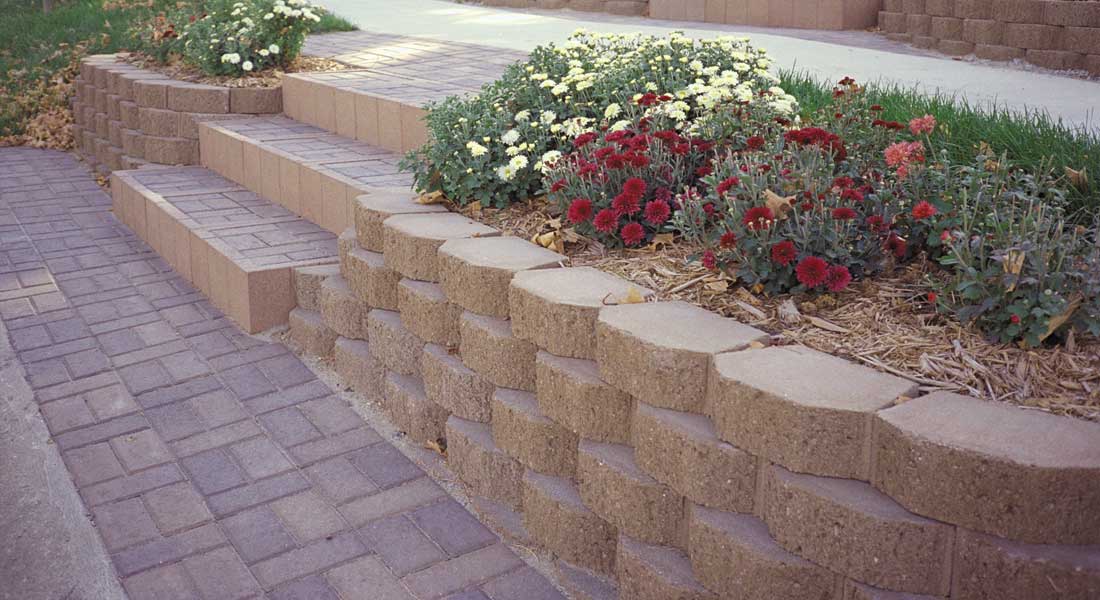Some Known Incorrect Statements About Retaining Wall And Garden Wall Construction
Wiki Article
Some Known Factual Statements About Retaining Wall And Garden Wall Construction
Table of ContentsNot known Details About Retaining Wall And Garden Wall Construction The 10-Second Trick For Retaining Wall And Garden Wall ConstructionRetaining Wall And Garden Wall Construction - The FactsSome Known Facts About Retaining Wall And Garden Wall Construction.
If this gradient is not regulated, the wall will relocate or stop working. Rain that runs the top of a maintaining wall can harm the dirt and plants on either side, deteriorating them away. Drain systems divert this water from vulnerable locations, minimizing the impact to the framework as well as its environments.It's been stated half of all the troubles with keeping walls include drain and water concerns, as well as keeping water out of these walls is a huge one. If it's dry, there's little to no opportunity any plant life can take hold - Retaining Wall And Garden Wall Construction. A properly created and set up system will certainly keep your wall surface dry, saving you cash on maintenance as well as replacement costs.
Load it with crushed stone or crushed rock. All retaining wall surfaces need to include drain rock also if a draining pipes pipeline is not required. Place filter material above the water drainage stone and also listed below the topsoil. That avoids great product and raw material from congesting the drain rock. If your retaining wall needs a drain pipeline, see to it the pipe has slots on all sides, not simply one.

Indicators on Retaining Wall And Garden Wall Construction You Should Know
This damage can be pricey to fix, as well as a correctly installed drainpipe would have prevented it (Retaining Wall And Garden Wall Construction).
A retaining wall surface that keeps dirt on the behind and water on the frontside is called a seawall or a bulkhead. A preserving wall is created to hold in area a mass of planet or such, such as the side of a terrace or excavation. The framework is built to resist the lateral stress of soil when there is a wanted linked here change in ground altitude that exceeds the angle of repose of the dirt.

These are cantilevered from a footing as well as increase above the quality on one side to preserve a higher level quality on the contrary side. Retaining Wall And Garden Wall Construction.
The Definitive Guide for Retaining Wall And Garden Wall Construction
This reduction lowers the stress on the keeping wall surface. The most important factor to consider in proper layout as well as installment of maintaining walls is to acknowledge and combat the propensity of the maintained material to move downslope as a result of gravity. This creates side earth stress behind the wall surface which depends upon the angle of inner friction (phi) and also the cohesive toughness (c) of the kept material, along with the direction and also size of movement the maintaining structure goes through.
Different kinds of preserving wall surfaces Construction kinds of gravity retaining wall surfaces Gravity wall surfaces rely on their mass (rock, concrete or various other hefty product) to withstand pressure from helpful hints behind as well as may have a 'batter' setback to improve stability by leaning back toward the preserved dirt. For brief landscape design walls, they are commonly made from mortarless rock or segmental concrete units (masonry units).
These wall surfaces cantilever lots (like a light beam) to a big, architectural footing, converting horizontal stress from behind the wall surface to upright pressures on the ground below. In some cases cantilevered walls are buttressed on the front, or consist of a counterfort on the back, to enhance their strength resisting high lots. Buttresses are brief wing walls at best angles to the main trend of the wall surface. This kind of wall surface utilizes much see this site less material than a conventional gravity wall. Diaphragm wall surfaces are a sort of retaining walls that are really stiff as well as normally watertight. Diaphragm wall surfaces are expensive wall surfaces, but they save time as well as space, as well as therefore are made use of in city buildings. Sheet pile preserving walls are normally made use of in soft dirt and tight areas.
For a fast quote the product is normally driven 1/3 over ground, 2/3 listed below ground, however this might be altered depending on the environment. Taller sheet stack walls will require a tie-back anchor, or "dead-man" put in the dirt a range behind the face of the wall, that is tied to the wall surface, typically by a wire or a pole.
The Ultimate Guide To Retaining Wall And Garden Wall Construction
An anchored keeping wall can be constructed in any one of the abovementioned styles but additionally consists of added toughness making use of wires or various other remains secured in the rock or dirt behind it. Typically driven right into the material with boring, anchors are after that broadened at the end of the wire, either by mechanical means or commonly by infusing pressurized concrete, which broadens to form a light bulb in the dirt.Report this wiki page